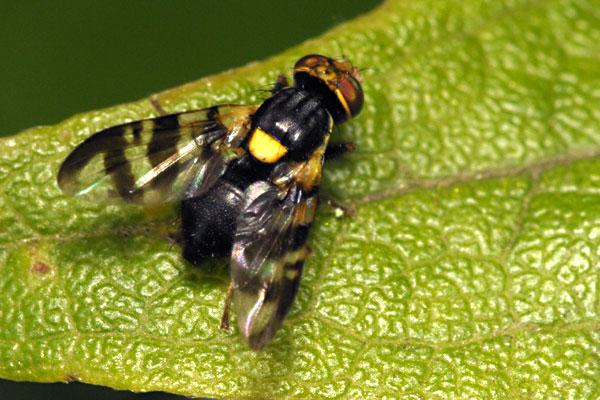Rhagoletis cerasi L. (ITIS)
European cherry fruit fly (ECFF)
Europe (Schuler et al. 2013)
First detected in New York in 2017 (Wakie et al. 2018)
Most likely through the movement of infested fruit (APHIS 2017)
Highly destructive pest of cherries (Prunus spp.) (Wakie et al. 2018)

European cherry fruit fly
Photo by Ben Hamers; Holland (Diptera.info)
Distribution / Maps / Survey Status
Federally Regulated
All Resources
Selected Resources
The section below contains highly relevant resources for this species, organized by source.
Partnership
Federal Government
International Government
State and Local Government
APHIS. 2017. New Pest Response Guidelines: Rhagoletis cerasi (Linnaeus) [PDF, 1.72 MB]. U.S. Department of Agriculture, Animal and Plant Health Inspection Service, Plant Protection and Quarantine.
Integrated Taxonomic Information System. Rhagoletis cerasi. [Accessed Aug 31, 2023].
Schuler, H., C. Bertheau, S.P. Egan, J.L. Feder, M. Riegler, B.C. Schlick‐Steiner, F.M. Steiner, J. Johannesen, P. Kern, K. Tuba, F. Lakatos, K. Köppler, W. Arthofer, and C. Stauffer. 2013. Evidence for a recent horizontal transmission and spatial spread of Wolbachia from endemic Rhagoletis cerasi (Diptera: Tephritidae) to invasive Rhagoletis cingulata in Europe. Molecular Ecology 22(15):4101-4111.
Wakie, T.T., W.L. Yee, and L.G. Neven. 2018. Assessing the risk of establishment of Rhagoletis cerasi (Diptera: Tephritidae) in the United States and globally. Journal of Economic Entomology toy054.
